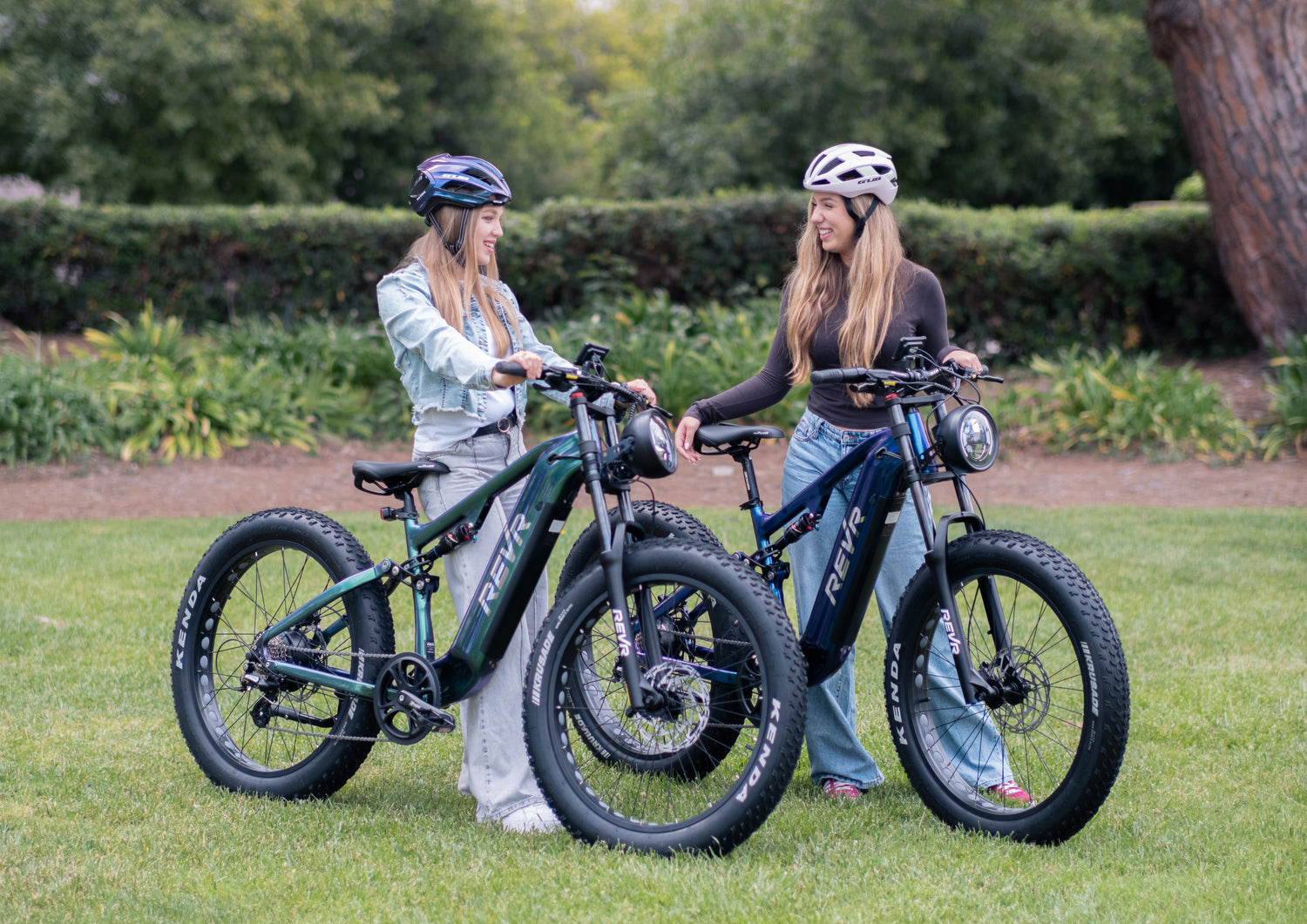
How to Maintain an Electric Bike?
The maintenance of an electric bike directly affects its range, performance, and service life. Below is a detailed guide on core component upkeep, daily usage tips, and seasonal maintenance, tailored to practical scenarios:
Battery Care: Core for Extending Range
1. Optimizing Charging Habits
Charging Timing
- Avoid deep discharge (charge when battery level drops below 20%). It’s recommended to charge at 30%-50% remaining and stop at 80%-90% (overcharging accelerates degradation).
- If riding 10 miles (approx. 16 km) daily, charge every 2-3 days instead of daily.
Temperature Control
- Charge at 15-25°C (charge in a garage during winter; avoid direct sunlight in summer).
- In extreme cold (e.g., Minnesota winters), bring the battery indoors to warm up before charging to prevent cell damage from low temperatures.
Long-Term Storage
- If unused for over a month, maintain a 40%-60% charge (avoid full or empty storage) and charge once a month.
2. Charging Equipment & Safety
- Use the original charger to prevent overcharging or short circuits from third-party chargers.
- Ensure the outlet is properly grounded when charging, and suspend charging during thunderstorms.
Motor & Controller: Powertrain Maintenance
1. Motor Cleaning & Protection
Daily Cleaning
- Wipe dust and dirt from the motor casing with a dry cloth; avoid direct water rinsing (especially for hub motors, as water ingress may damage coils).
- After riding through muddy roads, promptly clean debris around the motor with a soft brush.
Abnormal Noise Troubleshooting
- Unusual motor noise (e.g., harsh friction) may indicate bearing wear or internal debris. Contact a dealer for inspection (e.g., REVR’s offline store: Riding 5).
2. Controller Waterproofing & Moisture Protection
- After riding in the rain, check for water ingress at interfaces and dry water stains with a tissue.
Body Component Maintenance: From Brakes to Tires
1. Brake System Inspection
Disc Brake Maintenance
- Check brake pad wear weekly (replace if the thickness is below 2mm). Lightly sand the disc brake rotor if it makes noise.
- Replace brake fluid for hydraulic disc brakes every 1-2 years.
Braking Distance Test
- On dry roads, braking at 15mph (approx. 24km/h) should stop within ≤2 meters; increase to ≥3 meters in rain, and adjust brake sensitivity if needed.
2. Tire Management
Tire Tread Inspection
l Check tires for cracks or foreign objects (e.g., glass shards) before each ride. Replace tires when the tread depth is below 1.6mm.
3. Chain & Drivetrain
Chain Tension
- Press the middle of the chain with a finger; it should sag 10-15mm. Adjust via the rear derailleur tension screw or chain tool if too loose (causing skipping) or too tight (damaging the freewheel).
Electronic System & Accessory Maintenance
1. Display & Sensors
- Wipe the display with a slightly damp soft cloth; avoid alcohol or cleaners to prevent coating damage.
- If speed or cadence sensors lose signal (e.g., inconsistent assist), adjust their position with a wrench to within 5mm of the freewheel/chainring.
2. Lighting & Circuit Check
- Test front/rear lights and brake lights monthly. For unlit LEDs, replace batteries first or check connections (oxidation in waterproof plugs).
- If the circuit shorts (e.g., no response when the key is turned), replace the fuse (typically in the battery compartment) with the same specification.
Seasonal Maintenance
1. Summer (High Temperature & Rain)
- In high-temperature areas like California: Avoid parking the bike in direct sunlight after riding; move it to shade if the battery compartment exceeds 40°C.
- In rainy Florida: Rinse mud from the frame bottom with water after rain, and lubricate the chain to prevent rust.
2. Winter (Low Temperature & Snow)
- In snowy areas like Boston: Rinse snow from tires and brake rotors with warm water after riding to prevent salt corrosion (use a neutral cleaner).
- At temperatures below 0°C, the range may decrease by 30%. Wrap the battery in an insulated cover during rides.
3. Spring & Autumn (Transition Period)
- In windy Colorado springs: Check handlebar and seat bolts for looseness (wind resistance may displace components), and tighten with an Allen wrench to specified torque (e.g., 10Nm for handlebar bolts).
- In autumn leafy areas: Clean leaves from the freewheel and chain to avoid jamming (Can use a high-pressure water gun, low-pressure washing.).
Professional Maintenance Tips: When to Seek Repairs?
Annual Comprehensive Inspection
- Even without obvious issues, visit a brand dealer (e.g., REVR’s Riding 5) annually for:
- Battery health testing (internal resistance test; repair or replace if capacity drops below 80%);
- Motor bearing lubrication;
- Brake system bleeding and fluid replacement (mandatory for hydraulic disc brakes).
Emergency Repair Scenarios
- Sudden motor power loss or abnormal heating (over 60°C);
- Brake failure or sudden loss of stopping power;
- Bulging or leaking battery casing (stop use immediately and keep away from fire).
Practical Tools & Consumables List
|
Tools/Consumables |
Usage Description |
|
Multi-function Allen wrench |
Tighten frame and handlebar bolts |
|
Chain cleaner |
Remove chain grease and dirt |
|
Dry chain lube |
Lubricate in dry conditions, reduce dust |
|
Tire pressure gauge |
Precisely measure tire pressure |
|
Tire repair kit |
Temporarily patch punctures |
|
Battery insulated cover |
Maintain battery temperature in winter |
